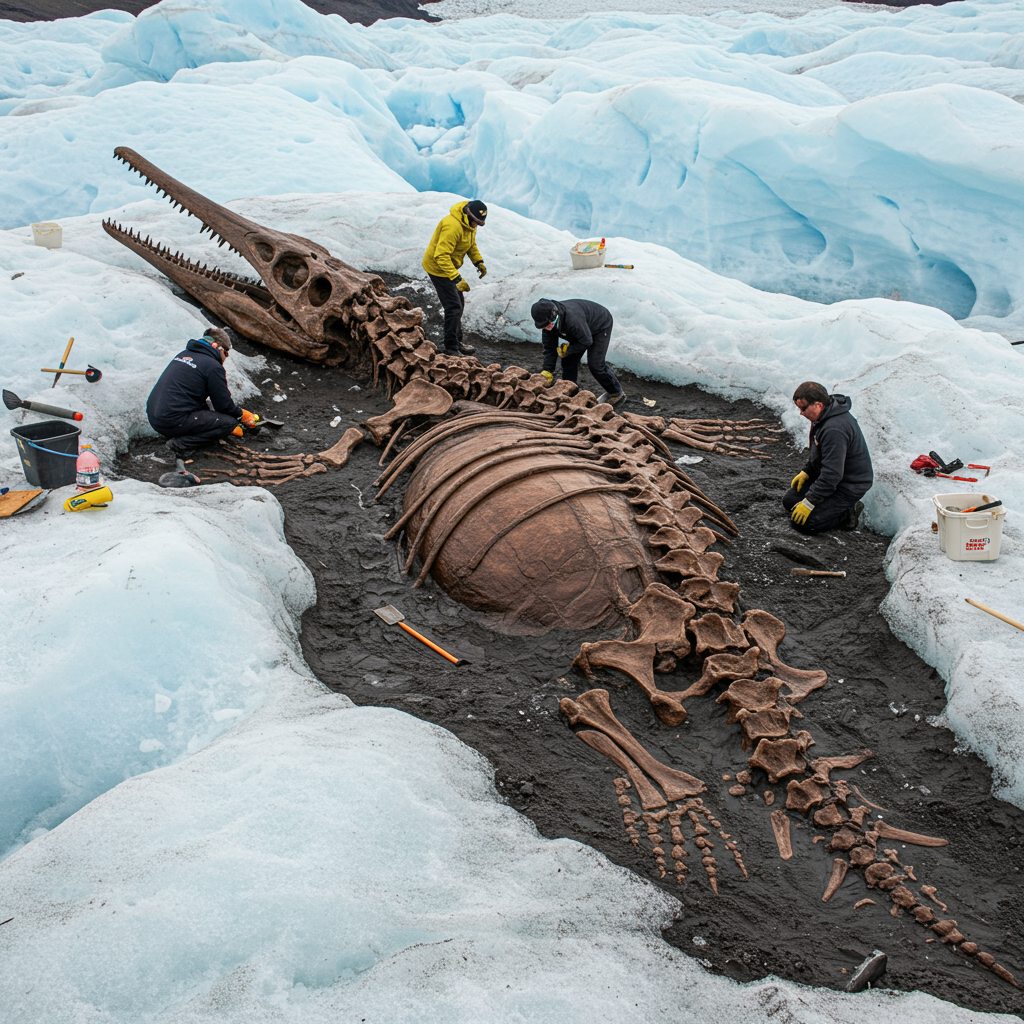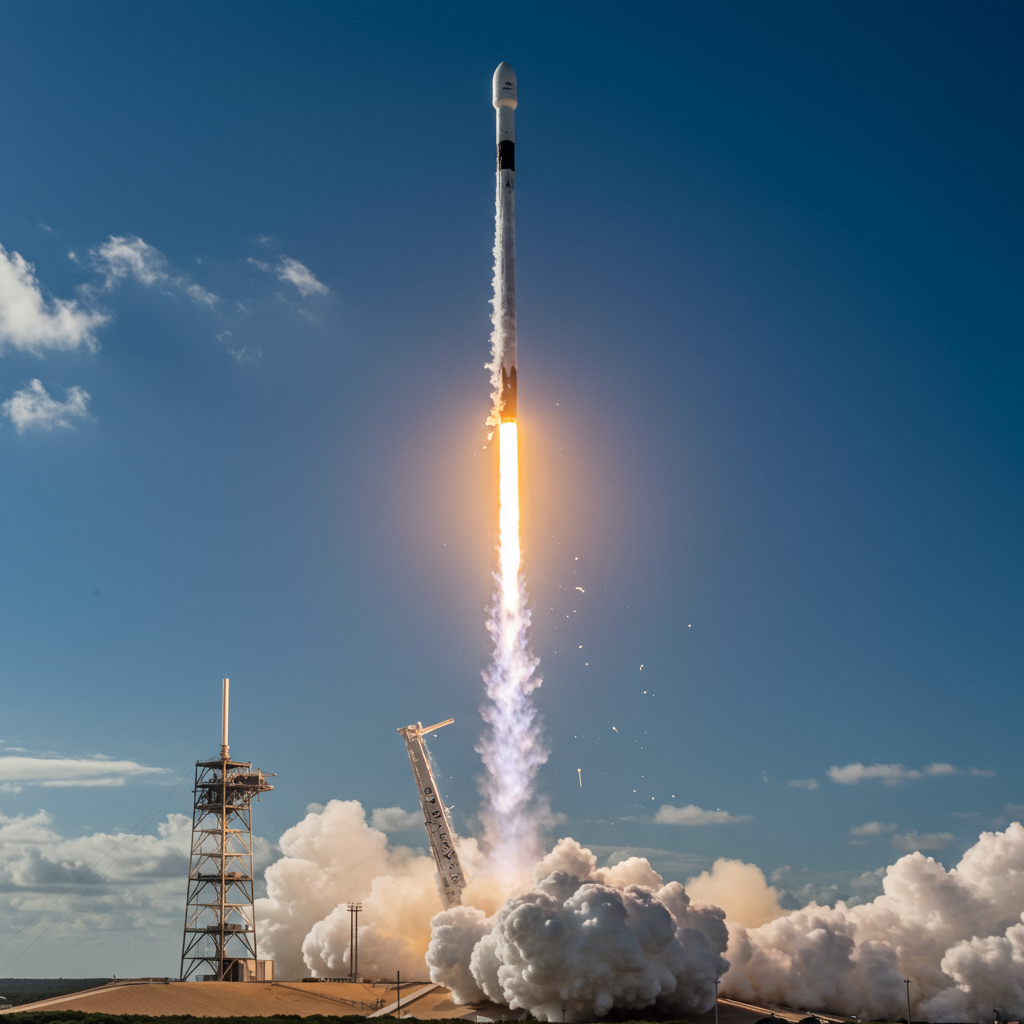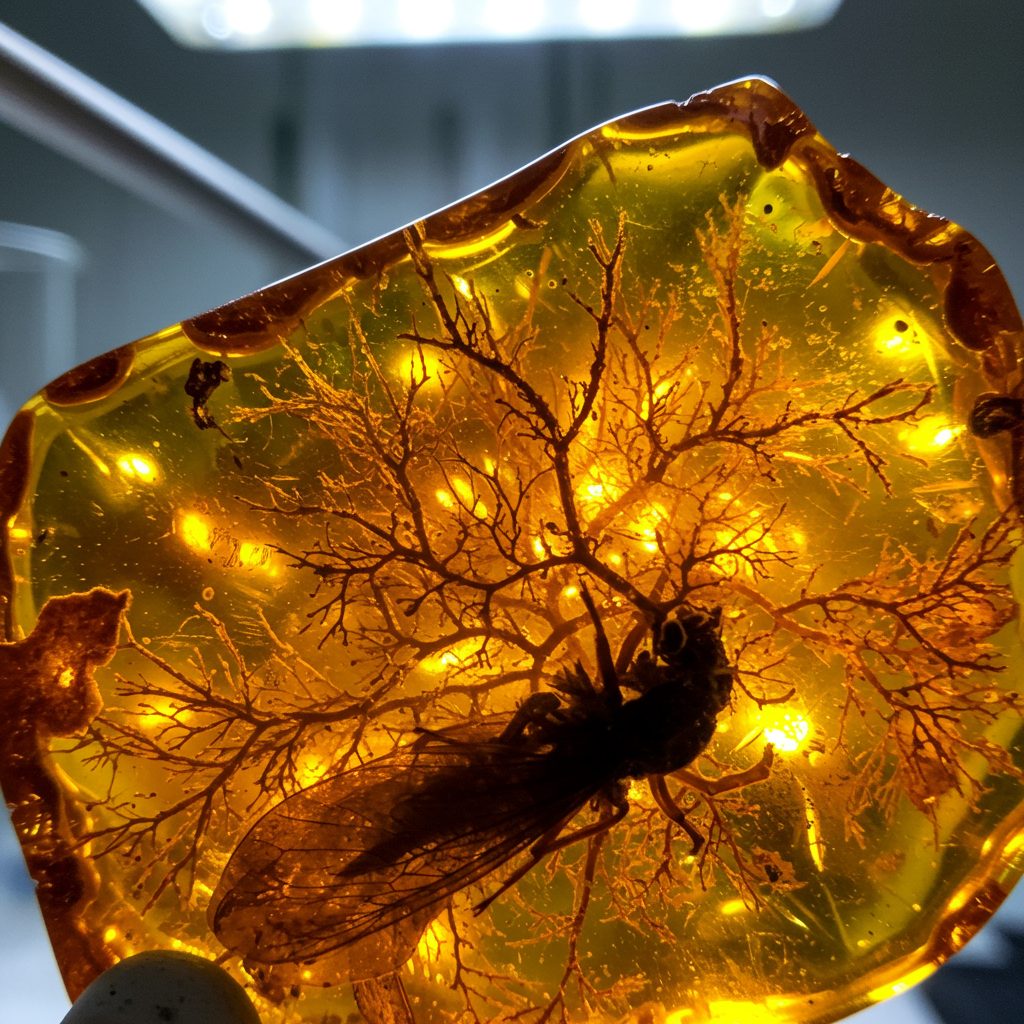A groundbreaking paleontological discovery in the glacial landscapes of Patagonia, Chile, is rewriting our understanding of ancient marine life. Scientists have unearthed the nearly complete fossil of a pregnant ichthyosaur, a formidable sea reptile that roamed the oceans over 100 million years ago during the Early Cretaceous period. Named Fiona, this remarkable find, detailed in the Journal of Vertebrate Paleontology, provides unprecedented insights into the biology, environment, and reproductive strategies of these extinct giants.
The preservation of fiona’s fossil is nothing short of spectacular. Measuring approximately 11 feet (3.4 meters) in length, her skeleton is almost fully intact. This level of completeness is extremely rare and valuable for researchers. But what makes Fiona truly unique is the presence of an unborn fetus preserved inside her body. The baby ichthyosaur is remarkably intact and positioned as if moments away from being born, offering a poignant and scientifically critical look at the final moments of this ancient mother’s life and the start of her offspring’s.
Researchers believe Fiona’s exceptional preservation was the result of a sudden, catastrophic event – likely an underwater landslide. This rapid burial under layers of sediment protected her body and the delicate fetus from decay and scavengers for millennia. As co-author Matt Malkowski noted, such swift, unexpected events can create perfect conditions for fossilization, preserving life forms for millions of years and providing invaluable data for paleontology. This particular case highlights how geological disasters can become scientific treasures, locking away secrets of the past for future discovery.
Life in a Changing Early Cretaceous World
Fiona’s fossil offers a unique window into the environment of the Early Cretaceous period in the Southern Hemisphere. This was a time of significant geological upheaval. The supercontinent Gondwana was actively breaking apart, with South America separating from what is now Africa. Such massive tectonic shifts profoundly influenced global climates, ocean currents, and marine ecosystems.
For apex predators like ichthyosaurs, these environmental changes were crucial. Migration routes could be altered, hunting grounds might shift, and suitable areas for reproduction could change dramatically. As Malkowski explained, creatures at the top of the food chain are highly sensitive to these large-scale environmental factors. Fiona’s presence in this location during this period suggests that even these dominant marine reptiles had to adapt to a rapidly transforming world. Studying her fossil, including her last meal of fish vertebrae, helps scientists understand how ichthyosaurs navigated and survived amidst such dynamic conditions.
Unlocking the Secrets of Ancient Reproduction
One of the most striking features of Fiona’s fossil is the direct evidence of her pregnancy. This discovery confirms a crucial aspect of ichthyosaur biology: they gave birth to live young. Unlike many modern reptiles that lay eggs on land, ichthyosaurs were fully adapted to marine life and reproduced in the water through viviparity.
Fiona is particularly significant as she is reported to be the only fully preserved pregnant ichthyosaur ever found in Chile. Her fossil provides researchers with detailed anatomical information about the late stages of ichthyosaur pregnancy and the positioning of the fetus. This specific find complements the broader understanding of viviparity in ichthyosaurs, which evidence suggests evolved very early in their lineage, potentially even before they fully transitioned from land to sea, as seen in older fossils like Chaohusaurus from the Triassic period. Lead author Pardo-Pérez emphasized that Fiona’s discovery contributes valuable information to our understanding of the species’ paleobiology and paleoecology. These insights into their reproductive strategies are key to understanding how ichthyosaurs successfully dominated ancient oceans for millions of years.
A Glimpse into Ancient Health and Injury
Beyond reproduction and environment, Fiona’s fossil reveals another fascinating detail: evidence of a healed injury. The fusion of her fin bones suggests she sustained a significant injury or infection during her lifetime but managed to recover. This aspect of paleopathology – the study of ancient diseases and injuries – is rarely seen in such detail for marine reptiles.
Fiona’s fossil offers a unique opportunity to explore the health challenges faced by these ancient creatures. Scientists can study how their bodies healed and adapted to injuries in their demanding ocean environment. Pardo-Pérez highlighted that Fiona’s complete skeleton will allow for deeper anatomical investigation using advanced medical technologies. Techniques like CT scanning can reveal microscopic details within the bones, providing further insights into her physiology, potential diseases, and the process of injury recovery. This blend of paleontology and modern medical imaging represents an exciting frontier in uncovering the biological realities of extinct species.
Frequently Asked Questions
Frequently Asked Questions
What is the significance of finding a pregnant ichthyosaur fossil?
Finding a pregnant ichthyosaur fossil provides direct evidence that these ancient marine reptiles gave birth to live young (viviparity) rather than laying eggs. This shows they were fully adapted to life in the ocean. A fully preserved pregnant fossil like Fiona offers unique details about their reproductive biology, including the development and positioning of the fetus just before birth, which is rarely captured in the fossil record. It adds critical information to our understanding of their life cycles.
Where was the pregnant ichthyosaur fossil named Fiona discovered?
The pregnant ichthyosaur fossil, known as Fiona, was discovered in the glacial fields of Patagonia, located in Chile. This region is significant because it was undergoing major geological changes during the Early Cretaceous period when Fiona lived, specifically the separation of South America from Africa. The location provides crucial environmental context for understanding the conditions Fiona faced during her lifetime.
What does Fiona’s fossil tell us about life in the Early Cretaceous period?
Fiona’s fossil offers several key insights into the Early Cretaceous. It shows that apex marine predators like ichthyosaurs were present and thriving in the Southern Hemisphere during a time of significant continental drift and environmental change. Her fossil suggests these animals had to adapt their behaviors, such as migration and hunting, to a dynamic world. Furthermore, her healed injury provides rare evidence of the health challenges faced by ancient marine life during this period.
The discovery of Fiona’s pregnant ichthyosaur fossil is a momentous event in paleontology. It combines a stunning level of preservation with critical biological and environmental information. From confirming live birth and detailing late-stage pregnancy to revealing ancient injuries and providing context for a period of intense geological change, Fiona offers a wealth of knowledge about the ancient oceans and the incredible creatures that inhabited them. As scientists continue to study this fossil using advanced techniques, it promises to reveal even more secrets about life millions of years ago.



